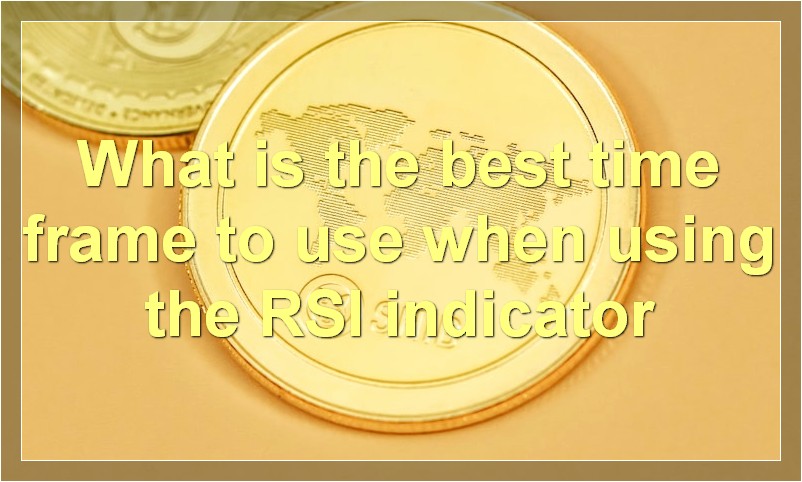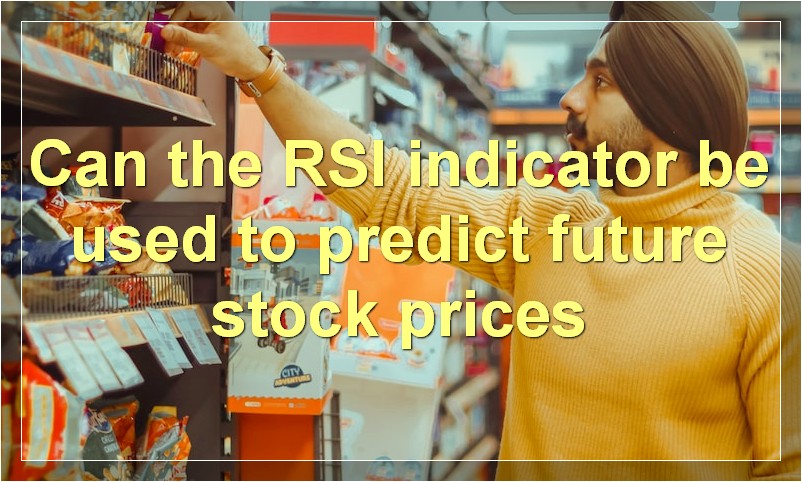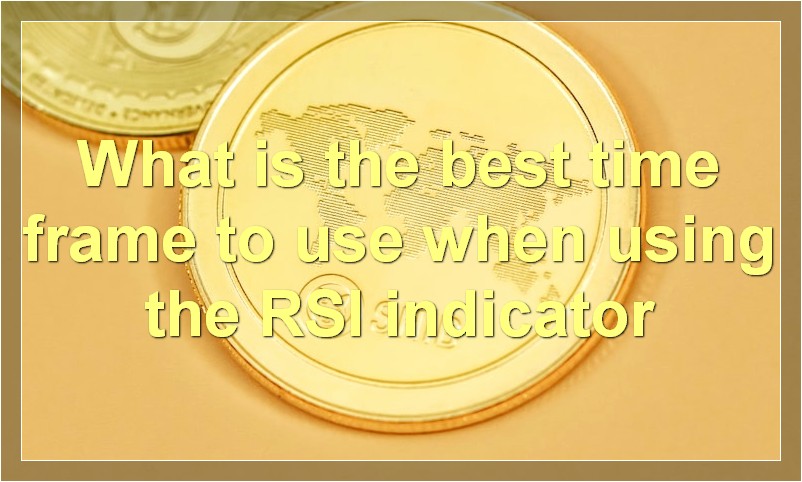If you’re a day trader, then you know the importance of finding the right stocks to buy and sell. But what if there was a way to predict which stocks were about to make a big move? Enter the RSI indicator.
What is the best time frame to use when using the RSI indicator

The Relative Strength Index (RSI) is a technical indicator that measures the magnitude of recent price changes to evaluate overbought or oversold conditions in the price of a security. The RSI is displayed as an oscillator and the position of the indicator relative to its centerline can be used to gauge the direction of a security’s price.
The most common time frame for the RSI is 14 days, although other periods may be used depending on the trading strategy. Longer time frames are typically used to identify longer-term trends, while shorter time frames are used to spot potential reversals or retracements.
The RSI can be a valuable tool for traders, but it is important to remember that it is only one part of a larger picture. Other indicators, such as moving averages, support and resistance levels, and trendlines, should also be considered when making trading decisions.
How do you interpret the RSI indicator
The RSI indicator is a technical indicator that measures the magnitude of recent price changes to assess overbought or oversold conditions in the market.
The RSI is calculated using the following formula:
RSI = 100 – 100/(1 + RS)
Where RS = Average Gain / Average Loss
The RSI ranges from 0 to 100. A reading of 70 or above indicates that a security is becoming overbought or overvalued, and therefore may be ripe for a pullback. A reading below 30 indicates an oversold or undervalued condition.
There are a number of ways to interpret the RSI indicator. One popular method is to look for divergences between the indicator and the underlying security price. A bullish divergence occurs when the security price makes a new low, but the RSI indicator fails to confirm this move with a new low of its own. This divergence is seen as a sign that the security’s price is due for a rebound. A bearish divergence occurs when the security price makes a new high, but the RSI indicator fails to confirm this move with a new high of its own. This divergence is seen as a sign that the security’s price is due for a pullback.
Another popular way to interpret the RSI indicator is to use it as a buy or sell signal. Many traders will buy when the RSI moves above 50 and sell when it moves below 50. Some traders will also use more aggressive buy and sell signals, such as buying when the RSI moves above 30 and selling when it moves below 70. While there is no right or wrong way to interpret the RSI indicator, it is important to use it in conjunction with other technical indicators and fundamental analysis to get a complete picture of the market.
What are some common trading strategies that use the RSI indicator
There are a number of different trading strategies that use the RSI indicator. Some common ones are as follows:
1. The RSI can be used to identify overbought and oversold conditions in the market. If the RSI is above 70, it is considered overbought, and if it is below 30, it is considered oversold. These levels can be used to trigger buy or sell signals.
2. The RSI can also be used to spot divergences. A divergence occurs when the price of an asset is moving in one direction while the RSI is moving in the opposite direction. This can be used as a potential signal that the price is about to reverse.
3. The RSI can also be used to help confirm other technical signals. For example, if you see a bullish candlestick pattern forming on the chart, you can check to see if the RSI is also indicating an overbought condition. This could be used as further confirmation of a potential buy signal.
What are some of the limitations of the RSI indicator
The RSI indicator is a widely used technical indicator that measures the magnitude of recent price changes in order to assess overbought or oversold conditions in the market. Despite its widespread use, there are a few limitations to the RSI indicator that traders should be aware of.
One limitation of the RSI indicator is that it is based on past prices and therefore is a lagging indicator. This means that it can often provide signals after a move has already begun, which can result in missed opportunities or false signals. Another limitation is that the RSI indicator is only useful for identifying trends in the market; it cannot be used to predict future price movements.
Finally, the RSI indicator is often susceptible to fakeouts, which occur when prices reverse direction after briefly reaching an overbought or oversold level. Fakeouts can often lead to losses for traders who enter positions based on RSI signals.
Can the RSI indicator be used to predict future stock prices

Yes, the RSI indicator can be used to predict future stock prices. The RSI is a momentum indicator that measures the speed and change of price movements. It is a technical indicator that is used by traders to identify overbought and oversold conditions in the market. The RSI can be used to predict future stock prices because it is a leading indicator. This means that it tends to give signals before the actual price movement occurs. The RSI is a valuable tool for traders because it can help them to make better trading decisions.
What are some other technical indicators that are similar to the RSI indicator
There are a few other technical indicators that are similar to the RSI indicator. These indicators include the moving average convergence divergence (MACD) indicator, the relative strength index (RSI) indicator, and the stochastic oscillator. Each of these indicators measures different aspects of market momentum and can be used to generate buy and sell signals.
How can the RSI indicator be used in conjunction with other technical indicators
The Relative Strength Index (RSI) is a momentum oscillator that measures the speed and change of price movements. The RSI can be used to identify overbought and oversold conditions, as well as divergences and bullish or bearish price momentum. The RSI can be used in conjunction with other technical indicators to help confirm trading signals. For example, if the RSI is overbought and price is making lower highs, this could be a bearish divergence that could signal a price reversal.
What are some of the most popular stocks that traders use the RSI indicator on
There are a few stocks that traders tend to use the RSI indicator on more than others. Some of the most popular include Apple (AAPL), Amazon (AMZN), and Facebook (FB). These stocks tend to be more volatile than others, so the RSI can be helpful in spotting potential reversals.
Does the RSI indicator work on all time frames or just certain ones
The RSI indicator can work on all time frames, but it is most effective on longer time frames. The indicator is not as effective on shorter time frames because there is not enough data to accurately calculate the RSI.

